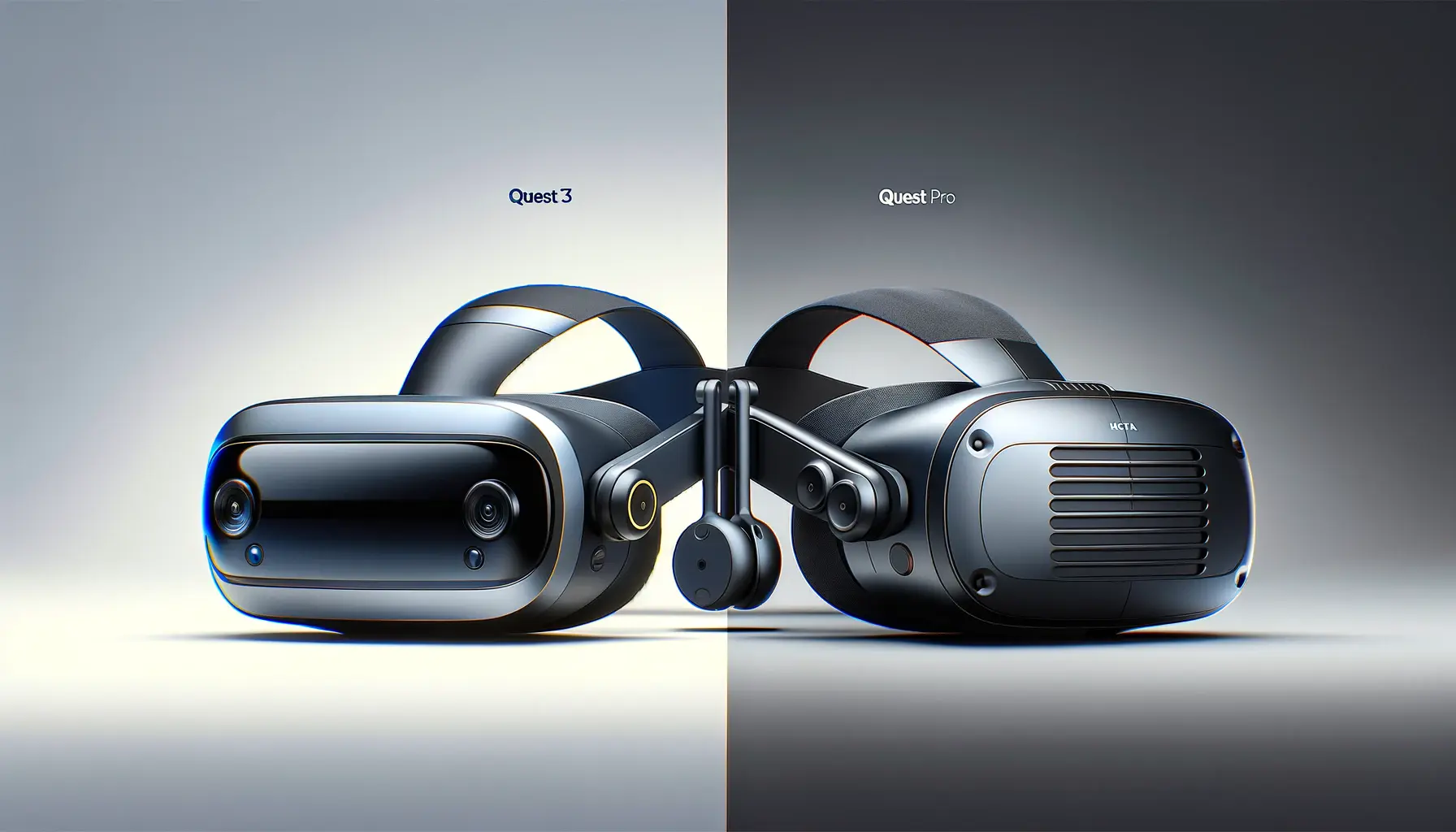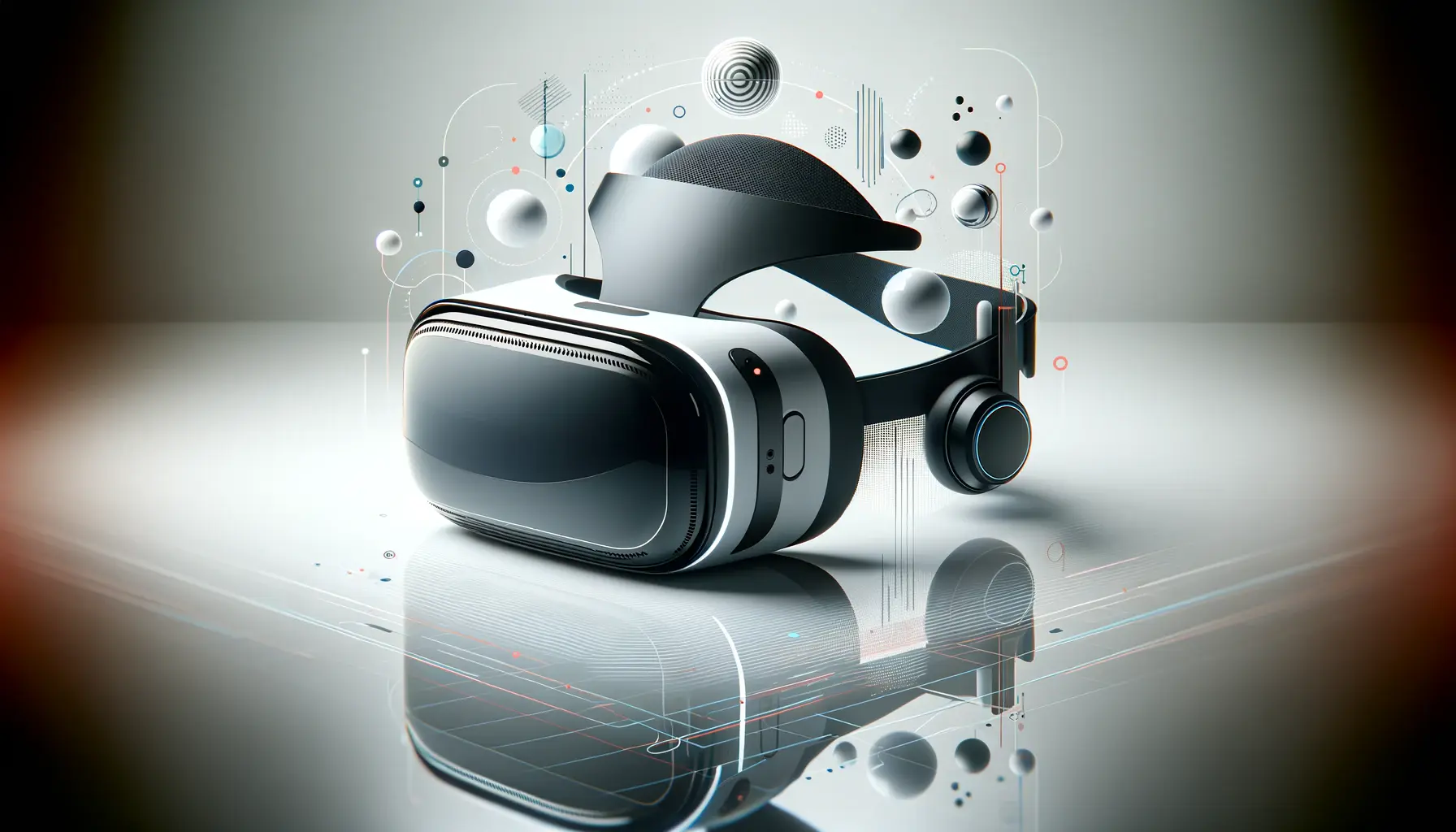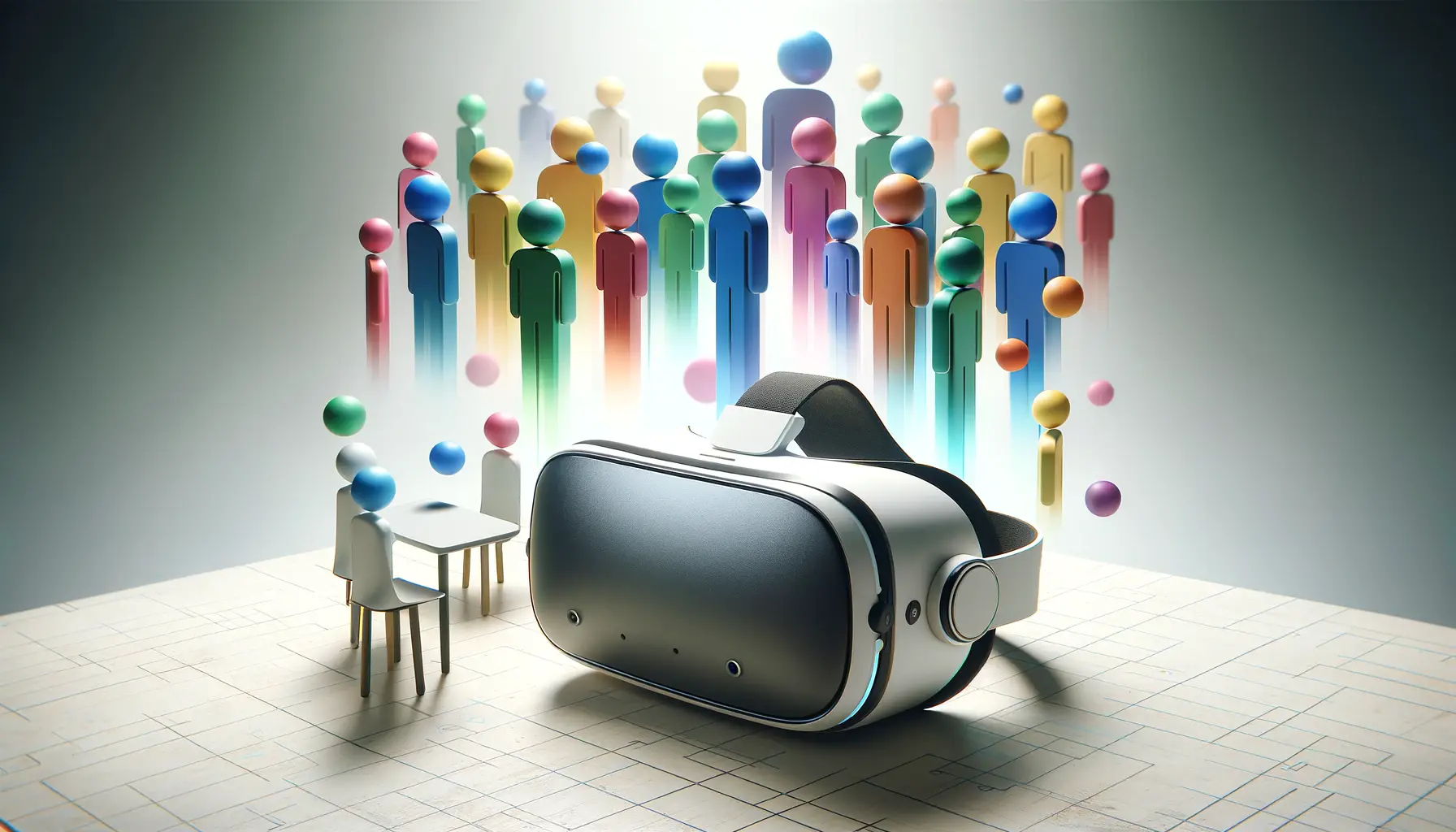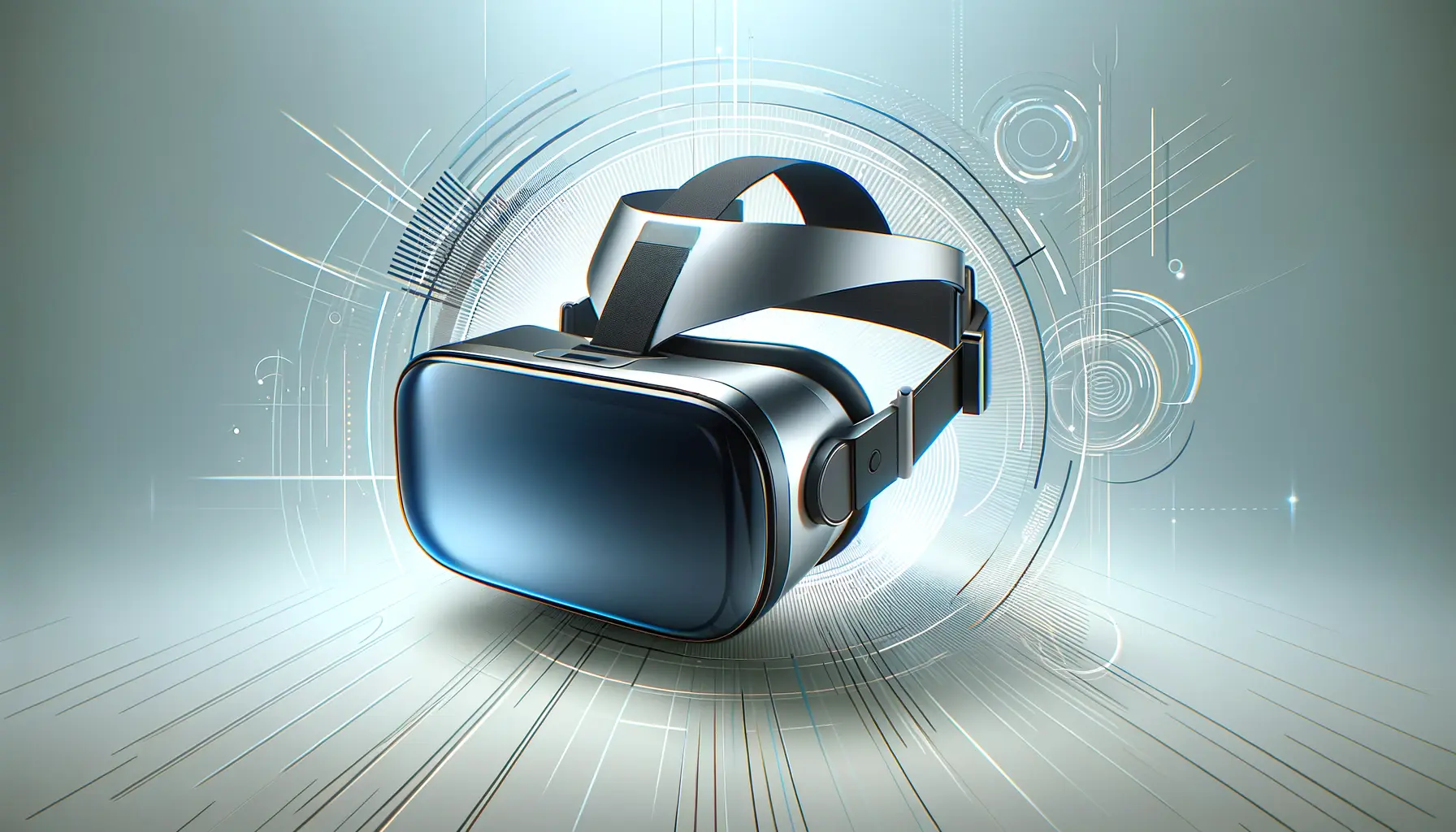The virtual reality landscape is evolving at an unprecedented pace, with Meta leading the charge in innovation and accessibility.
The release of the Meta Quest 3 and the Quest Pro has sparked a new era in immersive entertainment, offering users unparalleled experiences in virtual realms.
This article delves into a detailed comparison between these two groundbreaking devices, providing insights into their features, performance, and overall value to help you decide which headset is the right fit for your virtual adventures.
Both the Meta Quest 3 and Quest Pro are designed to cater to different segments of the VR market.
The Quest 3, with its advanced features and affordability, aims to bring high-quality VR experiences to a broader audience.
On the other hand, the Quest Pro is tailored for enthusiasts and professionals seeking the highest fidelity and performance in virtual reality.
As we explore the nuances of these devices, we’ll uncover the technological marvels that set them apart and the unique experiences they offer to users.
- Introduction to Meta Quest 3 and Quest Pro
- Performance and Hardware Capabilities
- Software Ecosystem and Content Library
- Connectivity and Compatibility
- User Experience and Comfort
- Battery Life and Portability
- Price and Value Proposition
- Choosing Between Meta Quest 3 and Quest Pro: A Final Verdict
- Meta Quest 3 vs. Quest Pro: Frequently Asked Questions
Introduction to Meta Quest 3 and Quest Pro
Design and Build Quality
The Meta Quest 3 boasts a sleek and ergonomic design, making it a comfortable fit for extended VR sessions.
Its lightweight structure and improved strap system ensure a snug and secure fit, minimizing discomfort and maximizing immersion.
The device’s intuitive interface and accessible controls make it user-friendly, appealing to both VR newcomers and seasoned enthusiasts.
Conversely, the Quest Pro features a more premium build, with attention to detail that caters to the discerning user.
Its high-quality materials and sophisticated design reflect its position as a top-tier device.
The Quest Pro’s balanced weight distribution and adjustable straps provide an even more comfortable experience, crucial for professional use where long periods of wear are common.
Display and Visual Fidelity
The Meta Quest 3 introduces an impressive display upgrade, boasting a higher resolution that brings virtual worlds to life with crisp details and vibrant colors.
Its fast-switch LCD panels reduce motion blur, enhancing clarity during fast-paced games and applications.
This leap in visual quality ensures that users can enjoy intricate textures and subtle nuances in their virtual environments, making the experience more realistic and immersive.
The Quest Pro, on the other hand, takes visual fidelity to the next level with its mini-LED display technology.
This allows for deeper blacks, higher contrast ratios, and a more vivid color palette.
The Quest Pro’s focus on visual excellence is evident in its support for a wider color gamut and localized dimming features, which enhance the depth and realism of VR content.
This superior display technology makes the Quest Pro ideal for professional and high-end entertainment applications where visual detail is paramount.
Choosing between the Meta Quest 3 and Quest Pro depends on your priorities: affordability and accessibility with the Quest 3, or the ultimate visual fidelity and comfort with the Quest Pro.
Performance and Hardware Capabilities
The heart of any virtual reality headset is its performance and hardware capabilities, which determine the smoothness and realism of the VR experience.
The Meta Quest 3 and Quest Pro are equipped with cutting-edge technology, but they cater to different user needs through their hardware configurations.
The Meta Quest 3 is powered by the Qualcomm Snapdragon XR2 Gen 2 processor, a significant upgrade from its predecessors.
This chipset is specifically designed for VR and AR applications, offering enhanced graphics, faster processing speeds, and improved energy efficiency.
The Quest 3’s hardware is optimized to deliver a seamless experience across a wide range of VR games and applications, making it an excellent choice for mainstream users.
- Qualcomm Snapdragon XR2 Gen 2 Processor
- Enhanced Graphics and Processing Speeds
- Optimized for Energy Efficiency
In contrast, the Quest Pro is aimed at the high-end market and professionals who demand the best performance possible.
It features the Qualcomm Snapdragon XR2+ platform, which provides even more power and efficiency.
The Quest Pro’s additional RAM and superior graphics capabilities allow for more complex and demanding VR experiences, including professional simulations and design applications.
- Qualcomm Snapdragon XR2+ Platform
- Increased RAM for Complex Applications
- Superior Graphics Capabilities
Audio andInteractivity Features
The immersive experience of VR is not just about what you see, but also what you hear and how you interact with the virtual world.
Both the Meta Quest 3 and Quest Pro have made significant strides in audio and interactivity, enhancing the overall user experience.
The Meta Quest 3 utilizes spatial audio technology, creating a 3D sound environment that changes dynamically with your movements.
This feature allows users to pinpoint sounds in their virtual surroundings, adding a layer of realism to the experience.
Coupled with the headset’s intuitive touch controllers, the Quest 3 offers a highly immersive and interactive VR experience.
- Spatial Audio Technology for 3D Sound Environment
- Intuitive Touch Controllers for Enhanced Interactivity
The Quest Pro, targeting a more demanding user base, advances these features further.
It incorporates high-fidelity spatial audio with an emphasis on clarity and depth, making it ideal for professional and educational applications where audio precision is crucial.
Additionally, the Quest Pro introduces hand tracking and eye tracking technologies, allowing for more natural and intuitive interactions within the virtual environment.
These features not only improve the user experience but also open up new possibilities for VR applications in various fields.
- High-Fidelity Spatial Audio for Professional Applications
- Hand Tracking and Eye Tracking Technologies for Natural Interactions
The choice between the Meta Quest 3 and Quest Pro in terms of performance, audio, and interactivity should be guided by your specific needs, whether you’re seeking a device for entertainment, professional use, or a blend of both.
Software Ecosystem and Content Library
The value of a virtual reality headset extends beyond its hardware capabilities to the richness of its software ecosystem and the diversity of its content library.
A broad and engaging selection of games, applications, and experiences is crucial for the long-term appeal of any VR device.
Meta has invested heavily in developing a vibrant ecosystem for both the Quest 3 and Quest Pro, ensuring users have access to a wide array of content.
Meta Quest 3: A Gateway to Virtual Worlds
The Meta Quest 3 shines as a gateway to an expansive universe of virtual content.
With its user-friendly interface and extensive content library, it offers something for everyone, from casual gamers to VR enthusiasts.
The Quest 3 supports a wide range of applications, including immersive games, educational tools, fitness apps, and social VR platforms.
Its compatibility with both standalone VR titles and PC-based VR games, via Oculus Link, makes it a versatile choice for users looking to explore the breadth of virtual reality.
- Extensive library of standalone VR titles
- Compatibility with PC-based VR games through Oculus Link
- Diverse range of applications, from gaming to education
Quest Pro: Tailored for Professionals and Enthusiasts
The Quest Pro, while offering access to the same vast content library as the Quest 3, is further enhanced by its focus on professional and high-end VR experiences.
It excels in applications requiring high fidelity and precision, such as architectural visualization, medical training simulations, and complex interactive experiences.
The Quest Pro’s advanced features, like hand and eye tracking, enable more sophisticated interactions and use cases, particularly appealing to developers, creators, and professionals in various industries.
- Focus on high fidelity and precision for professional applications
- Advanced interaction capabilities with hand and eye tracking
- Appeal to developers, creators, and industry professionals
While both headsets offer access to a rich VR content library, your choice between the Quest 3 and Quest Pro might hinge on whether you prioritize a broad and accessible range of experiences or specialized applications that leverage the Pro’s advanced features.
Connectivity and Compatibility
The ability to connect with other devices and platforms significantly enhances the versatility and utility of VR headsets.
Both the Meta Quest 3 and Quest Pro offer a range of connectivity options, but with some differences that cater to their respective target audiences.
Universal Connectivity with Meta Quest 3
The Meta Quest 3 is designed with universal connectivity in mind, supporting Wi-Fi, Bluetooth, and USB-C connections.
This allows users to easily connect the headset to PCs, smartphones, and other devices for a seamless VR experience.
The Quest 3’s compatibility with Oculus Link also enables it to run VR content from a connected PC, greatly expanding its library of accessible games and applications beyond standalone titles.
This makes the Quest 3 an excellent choice for users looking for a versatile and user-friendly VR headset.
- Supports Wi-Fi, Bluetooth, and USB-C connections
- Compatible with Oculus Link for PC VR content
- Expands library with both standalone and PC-based VR titles
Enhanced Professional Connectivity with Quest Pro
The Quest Pro builds on the connectivity features of the Quest 3, adding professional-grade options that cater to its target audience.
In addition to Wi-Fi, Bluetooth, and USB-C, the Quest Pro offers specialized connectivity solutions for enterprise environments, including secure networking options and integration capabilities with professional software and hardware.
This makes the Quest Pro particularly suitable for businesses and professionals who require reliable and secure connections for their VR applications.
- Includes all connectivity options of the Quest 3
- Offers secure networking options for enterprise use
- Integrates with professional software and hardware
Whether you’re a casual user or a professional, the connectivity and compatibility features of the Meta Quest 3 and Quest Pro ensure that you can easily integrate VR into your digital ecosystem.
User Experience and Comfort
The overall user experience and comfort level are critical factors in the adoption and enjoyment of virtual reality technology.
Both the Meta Quest 3 and Quest Pro have been designed with a focus on providing a comfortable and immersive VR experience, but they approach these goals with different priorities in mind.
Enhancing Accessibility with Meta Quest 3
The Meta Quest 3 emphasizes accessibility and comfort for a broad audience.
It features an adjustable head strap and a lightweight design to reduce fatigue during extended use.
The headset’s balanced weight distribution ensures that users can engage in longer VR sessions without discomfort.
Additionally, the Quest 3’s intuitive user interface and easy setup process make it an ideal choice for those new to virtual reality, as well as seasoned enthusiasts looking for a hassle-free experience.
- Adjustable head strap and lightweight design for comfort
- Intuitive user interface for ease of use
- Designed for extended VR sessions with minimal fatigue
Quest Pro: A Premium Comfort Experience
The Quest Pro takes the comfort experience to the next level, targeting professional users who may use the headset for prolonged periods.
It features an advanced strap system with enhanced padding and support, as well as a counterweight to balance the front-heavy design typical of VR headsets.
The Quest Pro also offers individual lens spacing adjustments and a facial interface designed to accommodate different face shapes and sizes, ensuring a perfect fit for every user.
These features, combined with the Pro’s superior ventilation system, make it the ultimate choice for comfort and usability in demanding professional environments.
- Advanced strap system with enhanced padding and support
- Individual lens spacing adjustments for a custom fit
- Superior ventilation system to reduce lens fogging and heat
While both headsets are designed to offer a comfortable VR experience, the Meta Quest 3 focuses on accessibility and ease of use, whereas the Quest Pro provides premium comfort features for professional and extended use.
Battery Life and Portability
The convenience of wireless VR headsets is significantly influenced by their battery life and portability.
These factors determine how freely users can move and how long they can engage with virtual content without needing to recharge.
Meta has designed both the Quest 3 and Quest Pro with these considerations in mind, though their approaches cater to different user needs.
Quest 3: Balancing Performance and Portability
The Meta Quest 3 is engineered to offer a balance between performance and portability, providing users with a decent battery life that supports extended play sessions.
Typically, users can expect around 2 to 3 hours of continuous use on a single charge, depending on the intensity of the applications being run.
The Quest 3’s design focuses on lightweight and compactness, making it easy to take on the go.
Its USB-C charging capability further enhances its portability, allowing for quick recharging with common chargers.
- 2 to 3 hours of battery life on a single charge
- Lightweight and compact design for easy portability
- USB-C charging for convenience
Quest Pro: Extended Use for Professionals
The Quest Pro is tailored for professionals and users who require longer periods of uninterrupted use.
It achieves this through a more substantial battery capacity and an innovative design that includes a detachable battery pack, enabling hot swapping without powering down the device.
This feature is particularly beneficial in professional settings where downtime can disrupt workflow.
Although the Quest Pro is slightly heavier due to its enhanced battery and additional features, it remains a portable solution for high-end VR applications, with the added flexibility of extended use.
- Larger battery capacity for longer use
- Detachable battery pack for hot swapping
- Designed with a focus on professional and extended use
Choosing between the Quest 3 and Quest Pro may come down to your specific needs regarding battery life and portability. Casual and mobile users may find the Quest 3’s balance ideal, while professionals might prioritize the extended use and flexibility offered by the Quest Pro.
Price and Value Proposition
The decision between the Meta Quest 3 and Quest Pro often comes down to their price and the value they offer to different types of users.
Both headsets aim to provide high-quality VR experiences but target distinct market segments with their pricing strategies and feature sets.
Affordability of Meta Quest 3
The Meta Quest 3 is positioned as a more affordable entry point into high-quality virtual reality.
Its competitive pricing makes it accessible to a wider audience, including gamers, educators, and casual users interested in exploring VR.
Despite its lower price point, the Quest 3 does not compromise on performance, offering a robust VR experience that rivals more expensive headsets.
This balance of affordability and quality makes the Quest 3 an excellent value proposition for those new to VR or looking for a cost-effective way to access immersive content.
- Competitively priced for wider accessibility
- Offers a robust VR experience without compromising on quality
- Excellent value for newcomers and casual VR users
Premium Investment in Quest Pro
The Quest Pro, with its higher price tag, is aimed at professionals, developers, and enthusiasts seeking the pinnacle of VR technology.
It justifies its premium cost through advanced features such as higher resolution displays, eye and hand tracking, and a more comfortable design for extended use.
For businesses and professional users, the Quest Pro’s capabilities can enhance productivity and offer new ways to engage with content and collaborators.
While the initial investment is significant, the Quest Pro’s value lies in its potential to unlock professional-grade VR applications and experiences.
- Higher price point reflects its premium features and capabilities
- Suitable for professionals, developers, and VR enthusiasts
- Offers value through enhanced productivity and professional-grade VR experiences
It’s essential to consider not just the upfront cost but also the long-term value each headset offers based on your specific needs and how you plan to use VR technology.
Choosing Between Meta Quest 3 and Quest Pro: A Final Verdict
In the rapidly evolving world of virtual reality, the Meta Quest 3 and Quest Pro stand out as two of the most compelling options available today.
Each headset offers a unique set of features tailored to different user needs, from casual VR explorers to professional users seeking the highest fidelity experiences.
The choice between these two devices ultimately hinges on individual preferences, use cases, and budget considerations.
Key Considerations for Potential Buyers
When deciding between the Meta Quest 3 and Quest Pro, potential buyers should consider several key factors.
The Quest 3 offers an accessible entry point into VR, balancing performance, comfort, and affordability.
It’s an ideal choice for those new to virtual reality or users looking for a versatile headset that delivers a wide range of experiences without breaking the bank.
On the other hand, the Quest Pro caters to a more niche market, offering advanced features such as eye and hand tracking, superior display technology, and enhanced comfort for extended use.
Its higher price point is justified by its appeal to professionals, developers, and enthusiasts who demand the best possible VR experience.
- Assess your primary use case: gaming, professional applications, or general exploration.
- Consider the importance of visual fidelity and advanced interaction features in your VR experience.
- Factor in budget constraints and the long-term value of your investment in VR technology.
Final Thoughts on Meta Quest 3 vs. Quest Pro
The Meta Quest 3 and Quest Pro each offer a window into the future of virtual reality, showcasing Meta’s commitment to pushing the boundaries of what’s possible in VR.
Whether you’re drawn to the Quest 3’s affordability and broad appeal or the Quest Pro’s cutting-edge features and professional-grade performance, both headsets stand as testaments to the incredible advancements in VR technology.
As the VR landscape continues to expand and evolve, the Meta Quest 3 and Quest Pro will undoubtedly play pivotal roles in shaping the experiences of users around the globe.
In conclusion, the choice between the Meta Quest 3 and Quest Pro is not merely about selecting a VR headset; it’s about choosing a portal to new worlds, experiences, and possibilities.
By carefully considering your needs, preferences, and the unique offerings of each device, you can select the headset that best aligns with your vision of virtual reality.
Meta Quest 3 vs. Quest Pro: Frequently Asked Questions
Delving into the specifics of Meta Quest 3 and Quest Pro can help potential users make an informed decision. Here are some of the most frequently asked questions about these two cutting-edge VR headsets.
The main difference lies in their target audience, features, and price. Quest 3 offers a high-quality VR experience at a more accessible price, while Quest Pro provides advanced features like eye tracking and a higher resolution display for professionals and enthusiasts.
Quest Pro features a mini-LED display for deeper blacks and higher contrast, while Quest 3 offers a higher resolution LCD for crisp visuals. The choice depends on your preference for dynamic range or pixel density.
Yes, both headsets can run the same VR applications available on the Meta platform, but Quest Pro might perform better with more demanding apps due to its advanced hardware.
For professionals and VR enthusiasts who demand the highest quality and performance, the advanced features of Quest Pro justify its higher price. Casual users might find Quest 3 to be a more value-oriented option.
Both headsets offer similar battery lives, with around 2 to 3 hours of continuous use. However, Quest Pro’s design allows for battery hot swapping, potentially extending its use without downtime.
Yes, both the Quest 3 and Quest Pro support standalone wireless VR experiences and can be connected to a PC via Oculus Link or Air Link for a wider range of VR content.
Quest Pro is designed with a focus on comfort for extended use, featuring an adjustable strap with enhanced padding and a counterweight for balance. Quest 3 also offers a comfortable fit but is more suited for casual or moderate-length sessions.
Yes, Quest Pro includes unique features such as eye tracking and face tracking for more immersive interactions, as well as a higher quality display technology for professionals and enthusiasts seeking the best VR experience.












